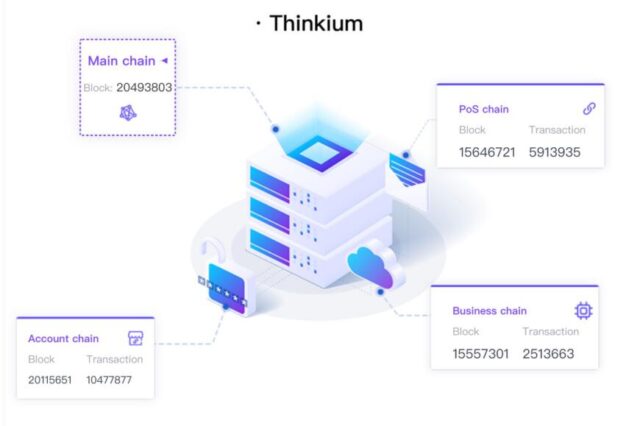Thinkium is an all-around public blockchain network, which achieves unlimited scalability at a linear cost by running through a multi-layer multi-chain structure and integrating Layer1 + Layer2 technologies. It has attracted a lot of community and media attention recently.
Thinkium public chain is committed to helping every ordinary people have the opportunity to participate in the construction of the underlying infrastructure of public chain, and share the growth of public chain together.The nodes of Thinkium public chain are mainly divided into two kinds: one is data node, and the other is consensus node.
Data node – responsible for the storage of all data in its chain.
Consensus node – responsible for its chain of operations, consensus packaging out of the block.
In a public chain system, consensus nodes are randomly assigned each time they participate, and they are constantly re-selected over time. The nodes in the wallet are divided into “mine pool node” and “consensus node” according to the mode of different operating nodes.
“Mine pool node” refers to the operating node under the mode of “joint mine pool”, and “consensus node” refers to the independent operating node. What they have in common is that they are responsible for the calculation of the chain and the consensus packaging out of the block.
The nodes running process of Thinkium public chain is as follows:

Firstly, according to the Thinkium public chain ecological application requirements, the system will deploy the required number of chains. (Currently there are main chain, account chain, POS chain and business chain as follows)
Secondly, during the initial deployment of each chain, data nodes need to be built to store all the data of the chain and synchronize the relevant data to the consensus nodes selected in each round of the chain in time.
Thirdly, consensus nodes are randomly selected to different chains through a random algorithm.
Such elections are held every once in a while.
Fourthly, all the consensus nodes selected to a certain chain in an election round form the consensus committee of the chain. These consensus nodes take turns to produce blocks in order to perform POS mining work in the current stage.
In general, Thinkium public chain can dynamically increase or decrease the number of chains according to the actual needs of ecological applications, which can effectively solve the scalability problem of public chain.
The data nodes in each chain work continuously and stably in this chain, and are responsible for data storage and communication. They are rewarded by TKM issued by the system, but they do not participate in consensus block.
The consensus nodes in the system are all in a “candidate area”. In each round, some of the consensus nodes are elected to a certain chain by random algorithm to participate in the work of packaging consensus blocks in this chain, and get TKM rewards from the system. After one round, all consensus nodes return to the “candidate area” and wait for the next round of elections.
In this way, it becomes uncertain whether each consensus node will participate in the chain work in the next round of election. Because the consensus node may or will not be selected and will continue to stay in the “candidate area”. This can effectively solve the problem of decentralization and security.
In addition, the Thinkium Community Alliance advocates free and equal communication, openness and tolerance of all kinds of creative ideas.
(Syndicated press content is neither written, edited or endorsed by ED Times)





























